There can be your advertisement
300x150
How to Set Up a Home Theater in the Living Room: 9 Tips
How to avoid common mistakes and what to pay special attention to – we give practical tips for creating the perfect cinema room in your own apartment
Want to set up a home theater in your living room? Then our tips will surely come in handy. After all, many mistakes in interior design – for example, incorrectly chosen doors or finishing materials – can nullify all efforts to select high-quality and expensive equipment.
1. Suitable Background
If one of the main functions of your living room is a home cinema, it makes sense to largely subordinate the room's interior to this purpose. One typical mistake is overly bright or too light a background: such an arrangement distracts from what's happening on the screen and hinders full immersion in the show or movie.
If you really want to create a vibrant accent wall in the living room, make it the wall opposite the TV.
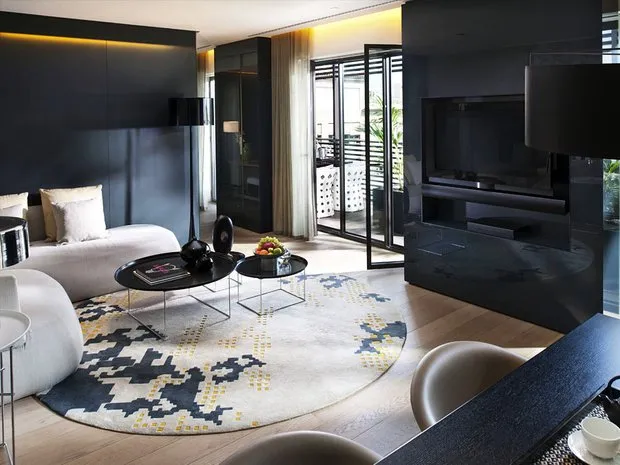
2. Technical Aspects
Selecting a Soundbar
Modern manufacturers offer a wide variety of equipment options for setting up a home theater. Whether you choose a large-screen TV or prefer a screen and projector, wall-mounted speakers or compact minimalist solutions – the choice is yours.
However, don’t hesitate to explore new market offerings. For example, Sony recently launched a neat, compact, and highly technological 2.1-channel soundbar HT-MT300 with Bluetooth® technology.
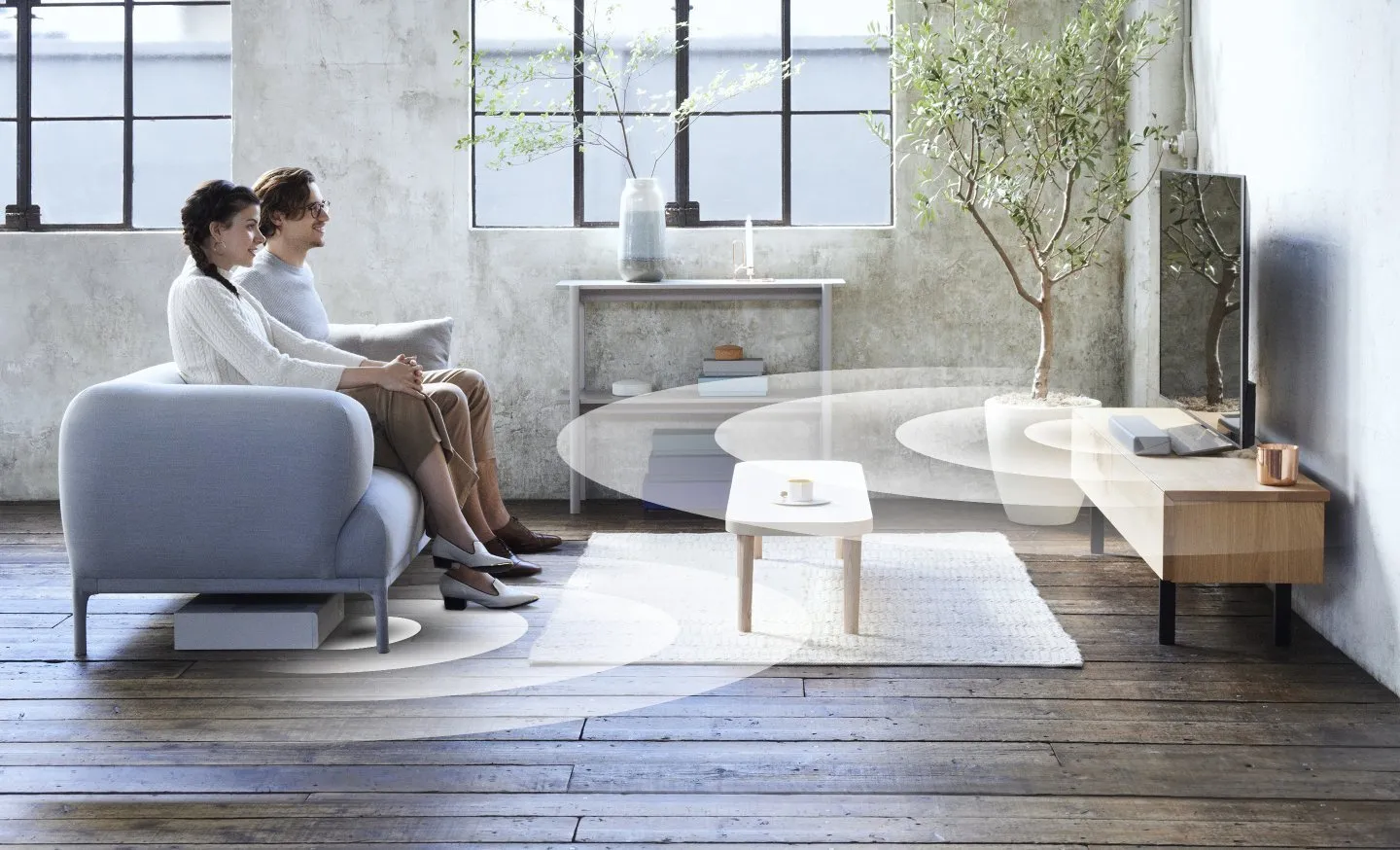
The S-Force PRO Front Surround technology (S-Force Pro Front Surround) creates a virtual 3D sound field using just two front acoustic systems. You can fill your living room with rich, immersive sound without cluttering it with numerous speakers!
Additionally, the Sony soundbar offers easy and quick optical, digital, analog, and USB connections to devices. It also features a minimalist design that fits into any interior (available in two colors: cream-white and charcoal-black).
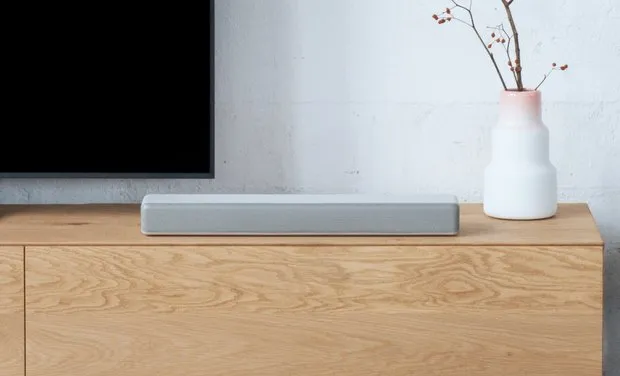
The HT-MT300 is ideal for those who want to minimize the visibility of equipment. The wireless subwoofer can be installed not only vertically but also horizontally, allowing it to be hidden under the sofa. Moreover, a special Sofa Mode is available that optimizes low-frequency sound and prevents sound muffling by furniture.
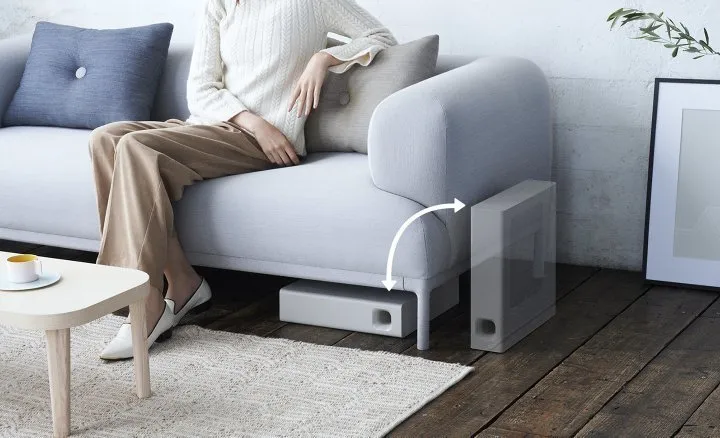
3. Niches for Equipment and Cables
Plan ahead where to place furniture and equipment – and provide all necessary niches and cable channels for electrical installations and signal cables. This point is extremely important not only for the aesthetic appeal of your home cinema but also for the safety of viewers (especially children).
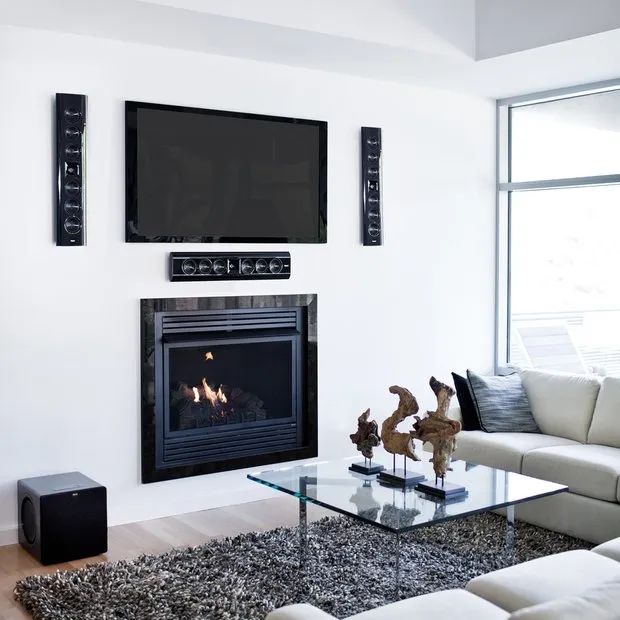
4. Equipment Stability
If you don’t intend to hide certain elements of the cinema setup – such as stylish equipment with expressive design – ensure that it is stable and securely mounted (again, this is especially important for families with small children).

5. Avoid Parallelism
In a room with strictly parallel walls, ceiling, and floor, there is a sound reflection and re-reflection effect. It's best to eliminate this by slightly adjusting the room’s geometry.
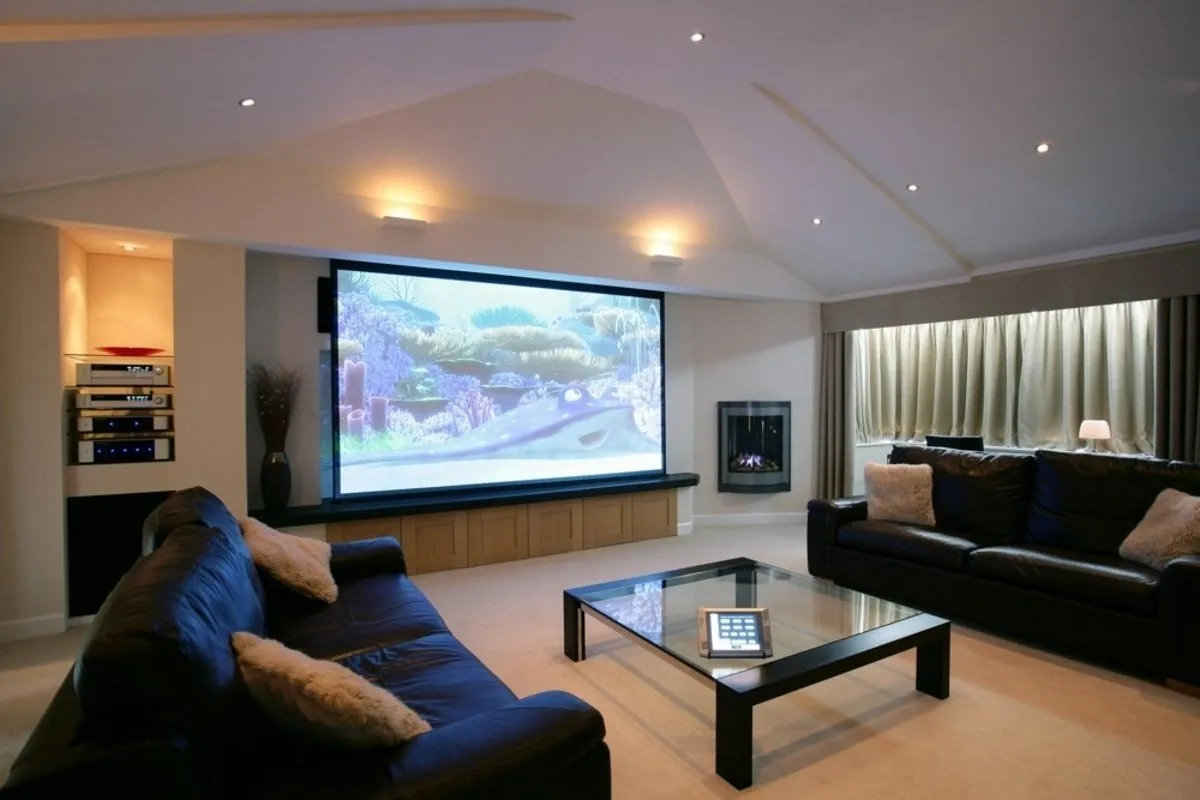
6. Sound Insulation and Sound Absorption
Two more points that will help you enjoy quality sound in your home theater (and also preserve children’s sleep and neighbors’ peace of mind) – good sound insulation and high sound absorption.
Modern manufacturers offer many solutions for both rough and finish finishing. Pay attention to special sound-absorbing panels and wall panels with sound absorption effects. When planning sound insulation, it’s best to go for maximum coverage, addressing the floor, walls, and ceiling accordingly.
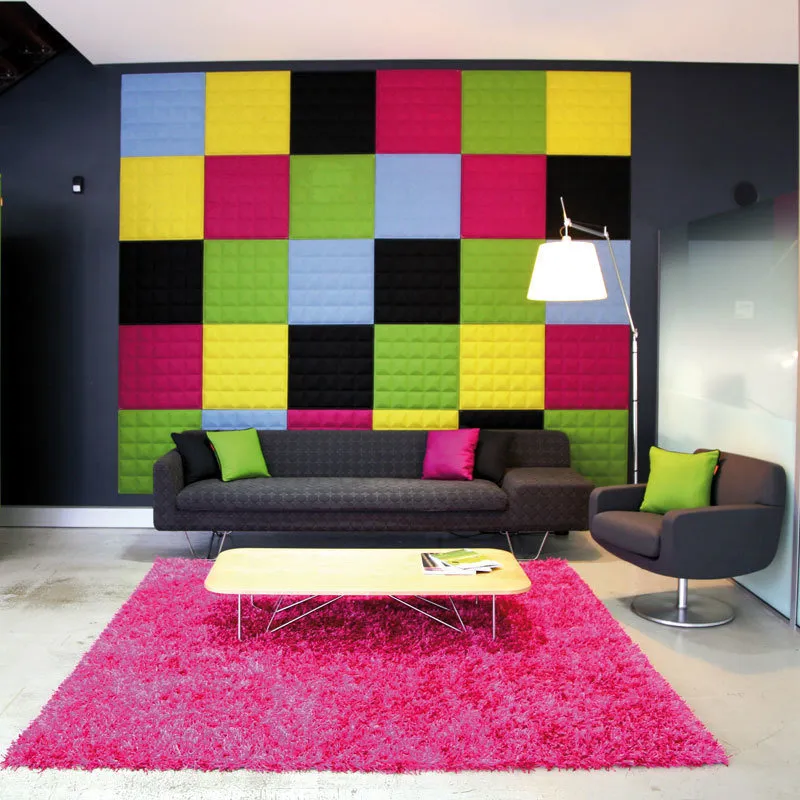
Living Room with Sound-Absorbing Panels
7. Thoughtful Selection of Finishing Materials
In the finishing of a living room-cinema, materials and surfaces with sound-diffusing or sound-absorbing properties should be used. It's particularly important to pay close attention to fabrics used in the room.
By the way, modern manufacturers offer entire collections of fabrics specifically designed for decorating home and public cinemas (the higher the sound absorption properties of the fabric, the better).
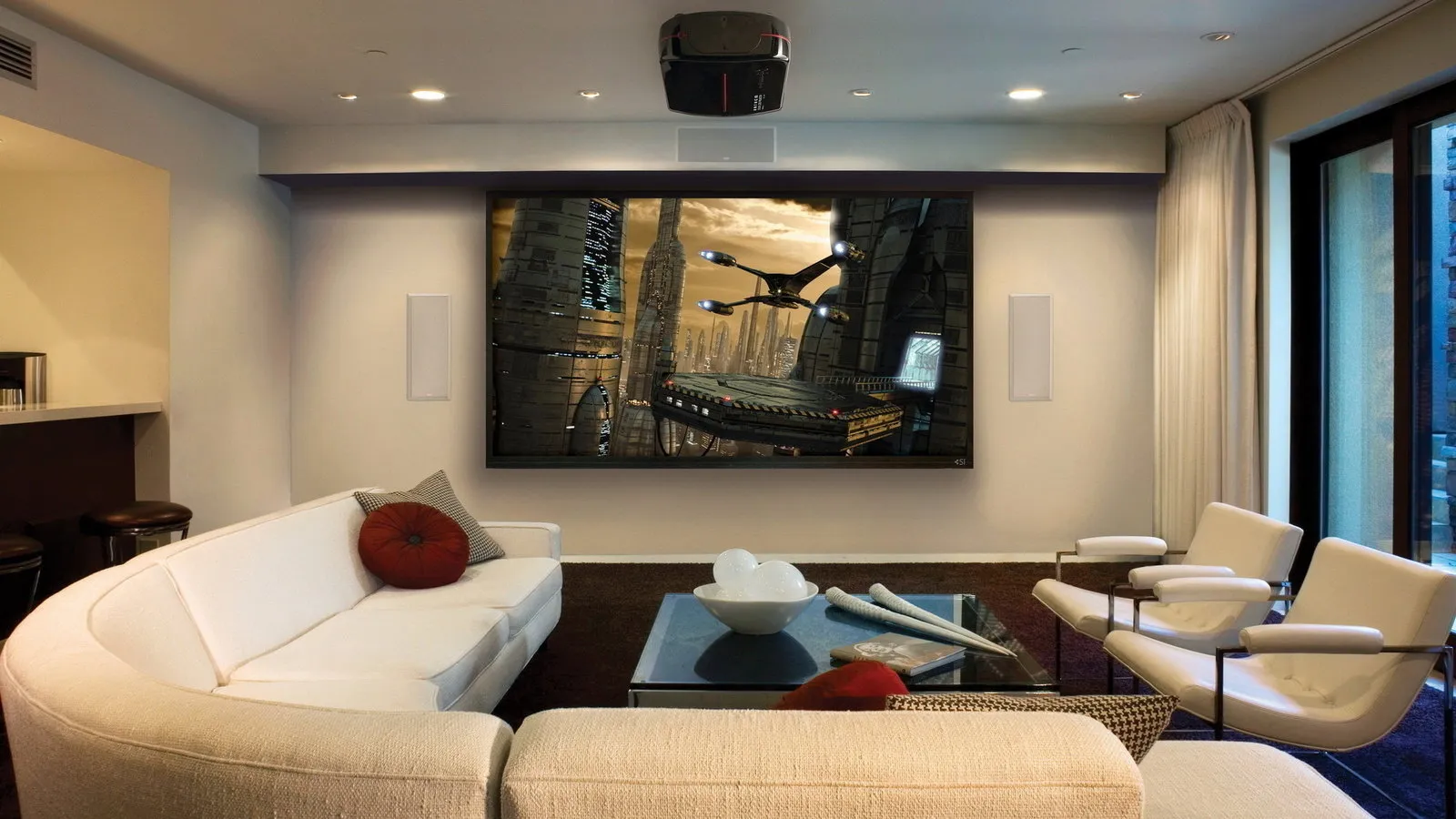
8. More Textiles
A tip directly derived from the previous point. Add more textiles, especially if your budget and time constraints don’t allow for proper sound insulation and maximum sound absorption.
Carpets, curtains, sofa cushions, and textile upholstery for sofas and chairs will be your allies in the fight for quality sound.
9. Fewer Reflective Surfaces
You may already have guessed: it’s better to avoid surfaces that amplify sound reflection in a home cinema. At least, try not to place them in the path between the viewer and the sound source.
For example, a mirrored or glass coffee table between you and the speakers is not an ideal choice. Furniture with glossy, glass, or mirror finishes around the living room is also unsuitable.
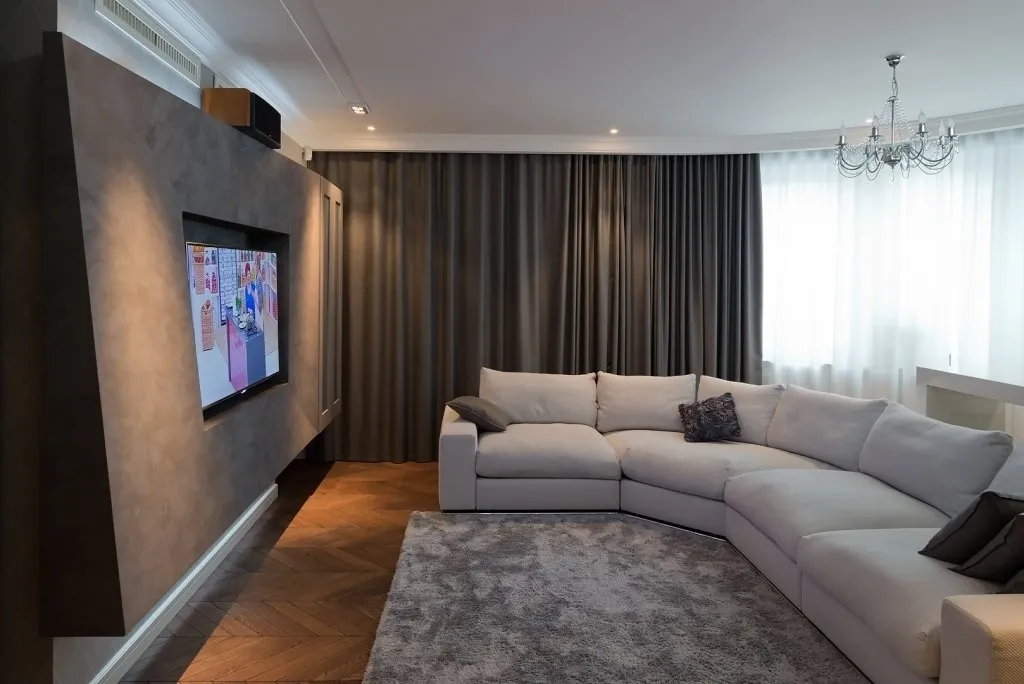
10. “Proper” Doors
When choosing interior doors, look for special acoustic models that provide maximum sound insulation.
11. Comfortable Furniture
Provide sufficient seating options. Floor cushions and poufs will come in handy for hosting guests. Try to select quality, comfortable furniture. After all, watching a movie takes at least two hours, and it’s definitely not comfortable to sit in an uncomfortable position for that long.
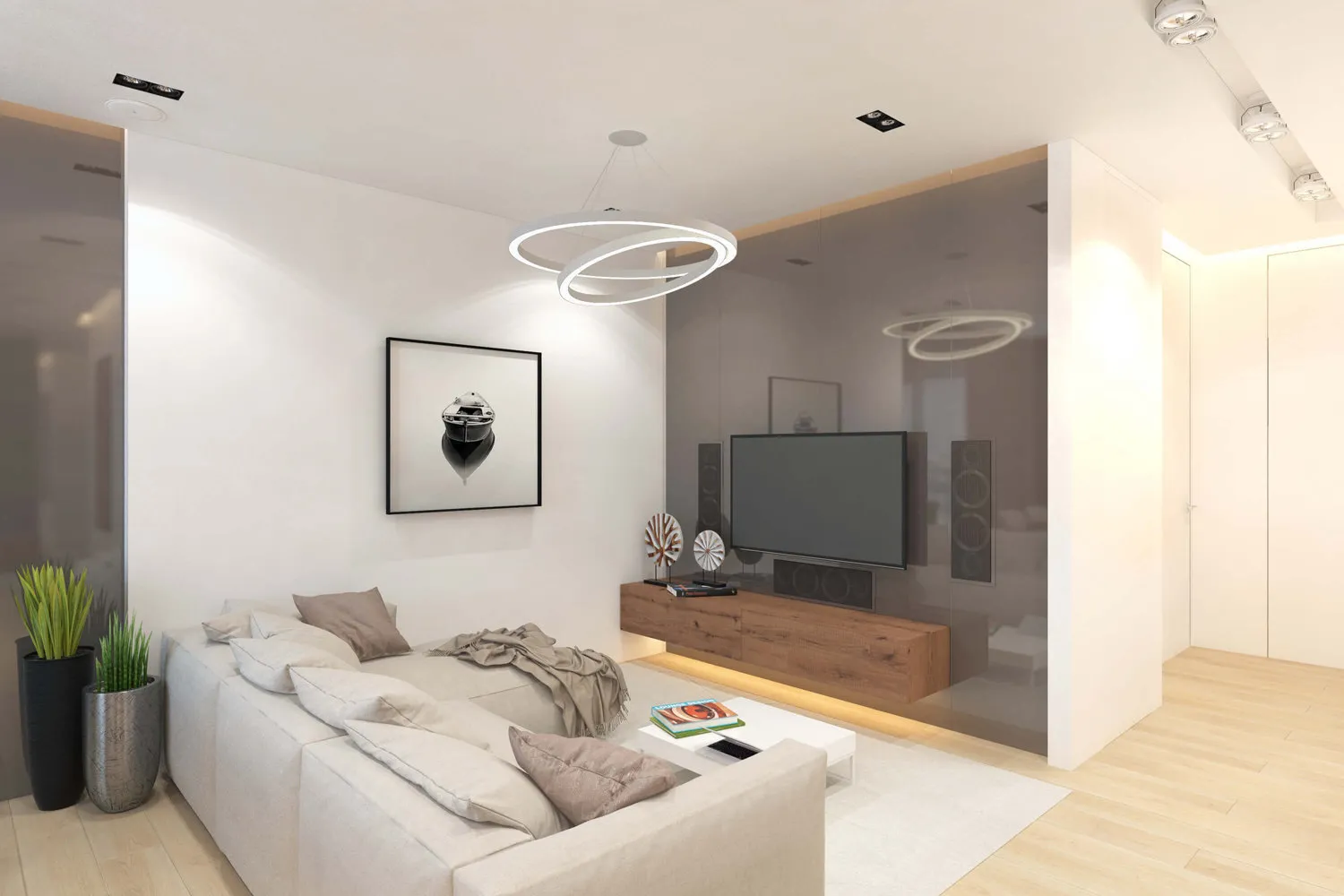
Design: Geometrium
The article was prepared with support from Sony Electronics LLC
More articles:
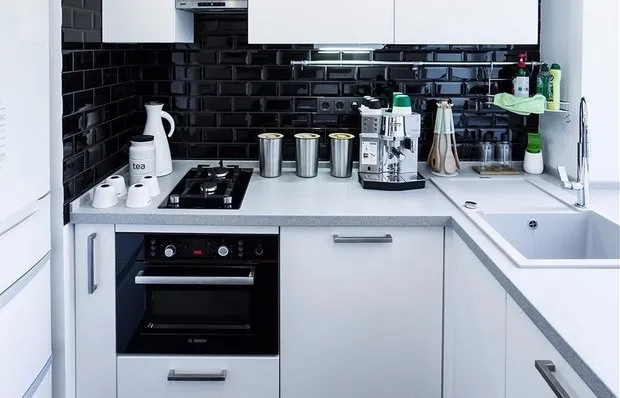 7 Common Mistakes in Small Kitchen Design
7 Common Mistakes in Small Kitchen Design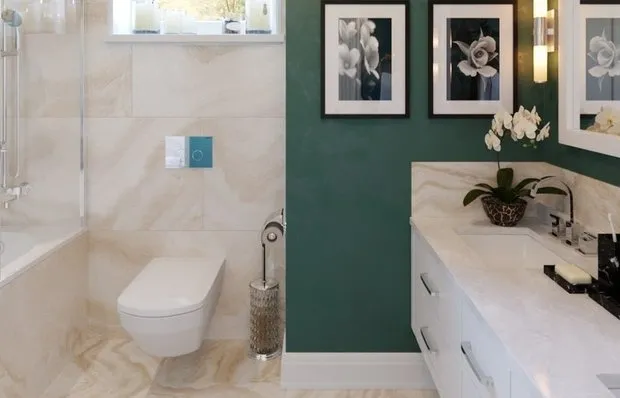 Professional Bathroom Design: Tips from a Professional
Professional Bathroom Design: Tips from a Professional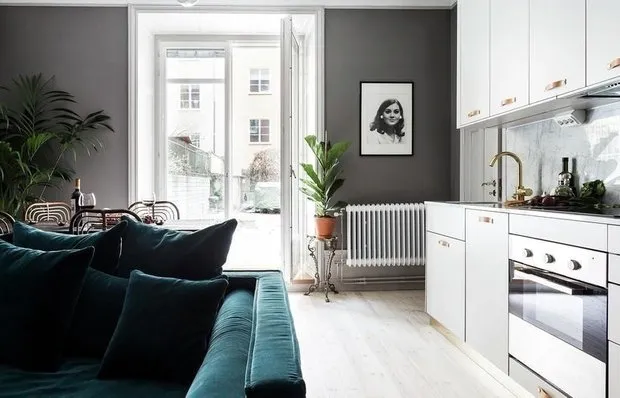 Scandinavian Interior Filled with Color and Living Plants
Scandinavian Interior Filled with Color and Living Plants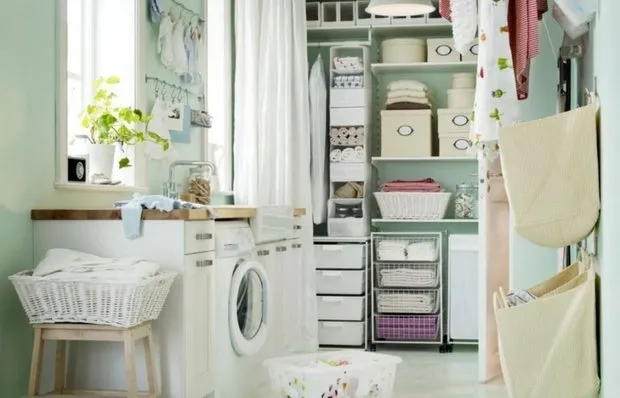 How to Arrange a Laundry Room in an Apartment: Designer Tips
How to Arrange a Laundry Room in an Apartment: Designer Tips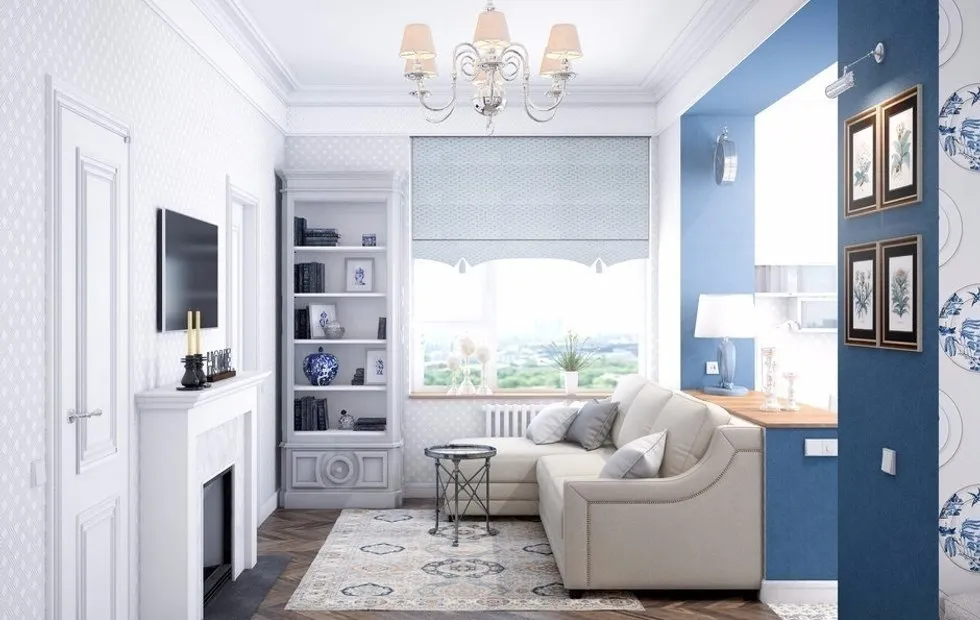 Doing Renovation in a "Panel" House with Professionals
Doing Renovation in a "Panel" House with Professionals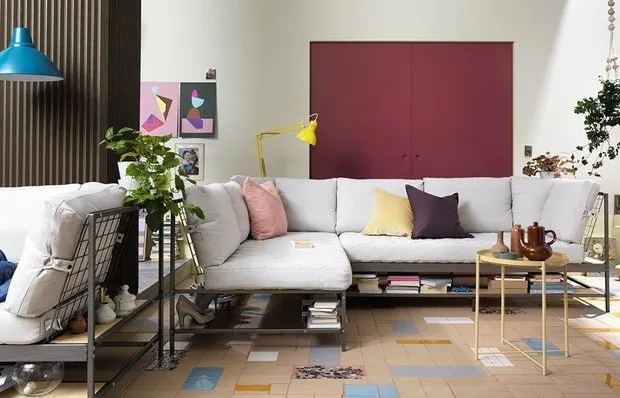 10 New IKEA Items for Small Apartments
10 New IKEA Items for Small Apartments On What You Should Never Cut Corners During Renovation
On What You Should Never Cut Corners During Renovation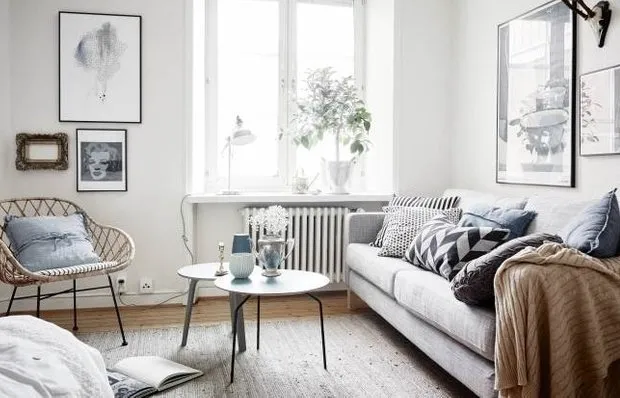 7 Ways to Make Life More Comfortable
7 Ways to Make Life More Comfortable